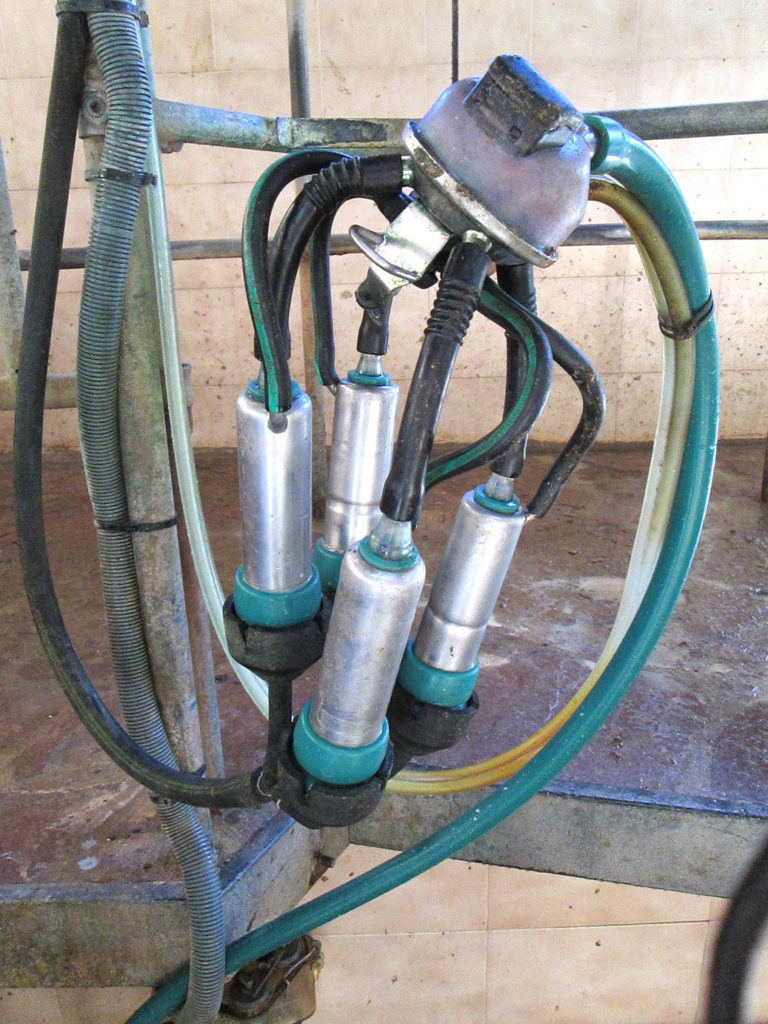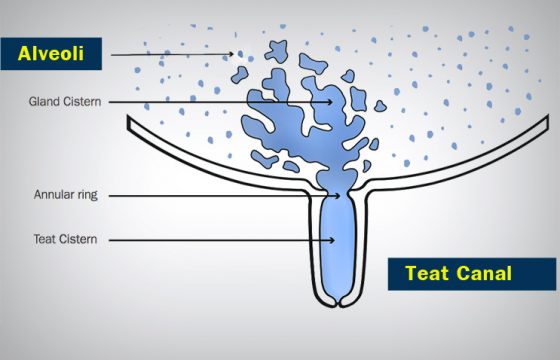Want to reduce mastitis in dairy cows? Reviewing your milking parlour can help!
Milking machines play a very important role in the prevention of contagious mastitis in dairy cows. Find here a few simple tips for a correct maintenance of your milking parlour which can help you to reduce the risk of contagious mastitis in dairy cows.
Checking the vacuum on the machine:
The vacuum regulator is the most important piece related to vacuum. The regulator requires regular checking, cleaning and maintenance to maintain its designed level of performance.
The most common pulsation faults include cracks or splits in the pulse tubes, foreign material (dirt, grit, straw, feed particles or insects) under the pulsator valve seats or lodged in the air inlet ports.
 A vacuum regulator in a non-optimal condition means a risk of blocking and causing damage to the teat, what eventually may cause mastitis in dairy cows.
A vacuum regulator in a non-optimal condition means a risk of blocking and causing damage to the teat, what eventually may cause mastitis in dairy cows.
Making sure the vacuum is well conducted:
Liners are also an important aspect to include in the milking parlour checking, remember every aspect counts in prevention of mastitis in dairy cows.
Liners should have no cracks in the short milk tube connecting to the claw, and no surface crazing or swelling evident on the mouthpiece lip or inner barrel. Milk tubes and droppers, short milk tubes and short pulse tubes should be inspected for wear, cracks, tears, or changes in cross-sectional area due to kinking, distortion or swelling due to fat absorption.
Visually inspect at least 20% of the liners and short milk tubes for cracks or splits (National Mastitis Congress, 2008).
After these easy inspections, milking machine equipment can be evaluated.
Evaluating the milking machine equipment:
Why is it so important to understand if the milking machine is working well?
At the 1987 International Mastitis Symposium in Montreal, Canada, the question was asked: “What percentage of all infections are due to milking machine factors?” The answers given were “we don’t really know”; “probably quite low”; and “anywhere between 0% and 100%” (National Matitis Congress).

Can we provide any more definitive answers today?
It is stimated of direct and indirect milking machine effects range from about 6% to 20% of the overall new mastitis in dairy cows infection rate. The direct effects (including bacterial transport, cross-contamination and impacts) might account for about 10% of new infections on most farms.
Indirect effects (including effects on the health of the teat canal, teat tissues and skin) might account for another 10% in an average herd. However, it is difficult to go beyond these broad-brush estimates (Mein at al., 2004).
Use of Testing equipment, What’s a dynamic testing?
The use of testing equipment and procedures for measurement of vacuum levels and vacuum changes during milking has been defined loosely as “dynamic testing”. In 1996, Reinemann et al., proposed a new way to classify tests.
- Dry tests: tests conducted with the machine running but not milking and only air flowing through the machine.
- Wet tests: tests performed with the machine running but not milking with both air and liquid (water, milk or artificial milk) flowing through the machine using flow simulator or artificial udder.
- Milking time tests: observations or measurements made while milking live animals.
As new test methods are developed, new terminology is required to describe these various types of tests. The term “static testing” has traditionally been used to describe tests that are performed with the machine running but only air flowing through the system.
This term is misleading and should be dropped. During these types of tests, air is moving into and through the system, liners are opening and closing. The key feature of so-called “static testing” is that the milking machine is running but not milking. More particularly, no liquid is flowing through the system. The system is dry.
Most dry tests measure vacuum levels, air flow rates, and the cyclic vacuum changes in the pulsation system (Reinemann, 1996).
Content originally created for “the Mastipedia”.
nacAuthors: Nicola Rota (Udder health and milk quality consultant).


